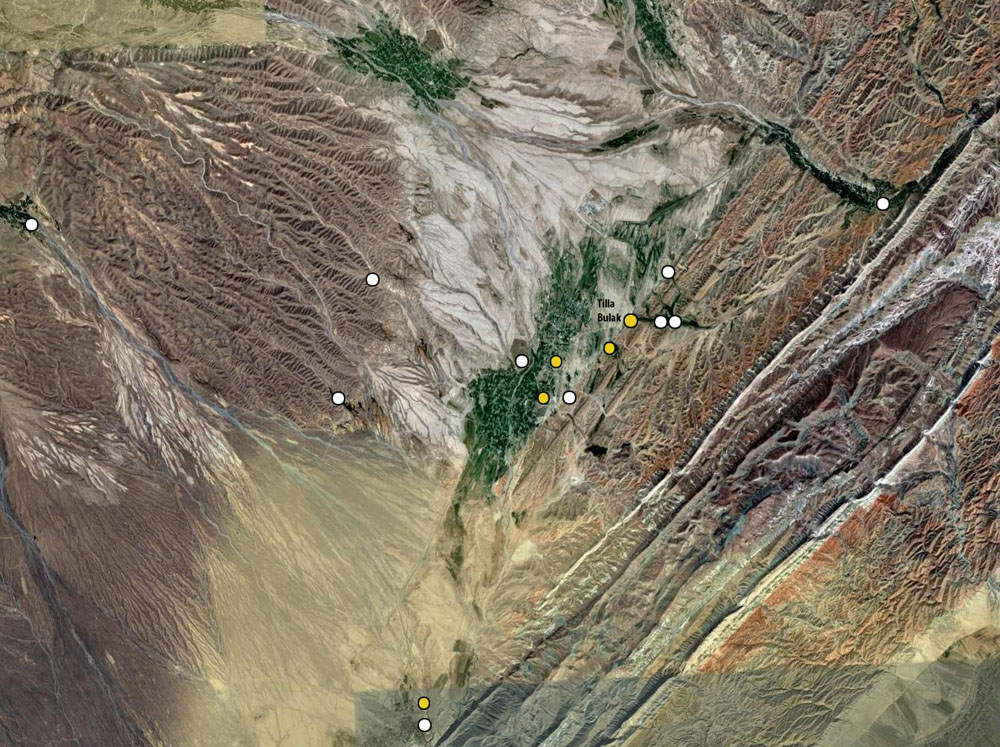
Accompanying our work at Tilla Bulak is an investigation of the settlement history of the Pashkurt plain. In connection with a
geomorphological prospection of a 25 x
were mapped, with sites datable from the Late Bronze Age until today.
Of primary interest is the fact that our oldest finds from the region date to the early phase of the Sapalli Culture. They are thus
contemporary with Tilla Bulak. It is still unclear where the people settling Southern Uzbekistan at the beginning of the 2nd
millennium B.C. came from, but Turkmenistan and Northern Afghanistan are the most likely regions.

Picture signature: Mapping of archaeological sites in the region of Pashkurt (2009).
Bronze-age sites –
yellow; sites of other periods – white.
While most periods from the early 2nd millennium BC onwards are represented, we did not find any Early Iron Age sites so far. The
reason could be sought either in the low visibility of the hand-made, painted ceramics of this time, or in the burial by later Iron Age
layers on one and the same site. However, it is not excluded that settlement may have been discontinued in the later 2nd millennium.
The next peak in settlement intensity dates to Kushan and Early Medieval times.